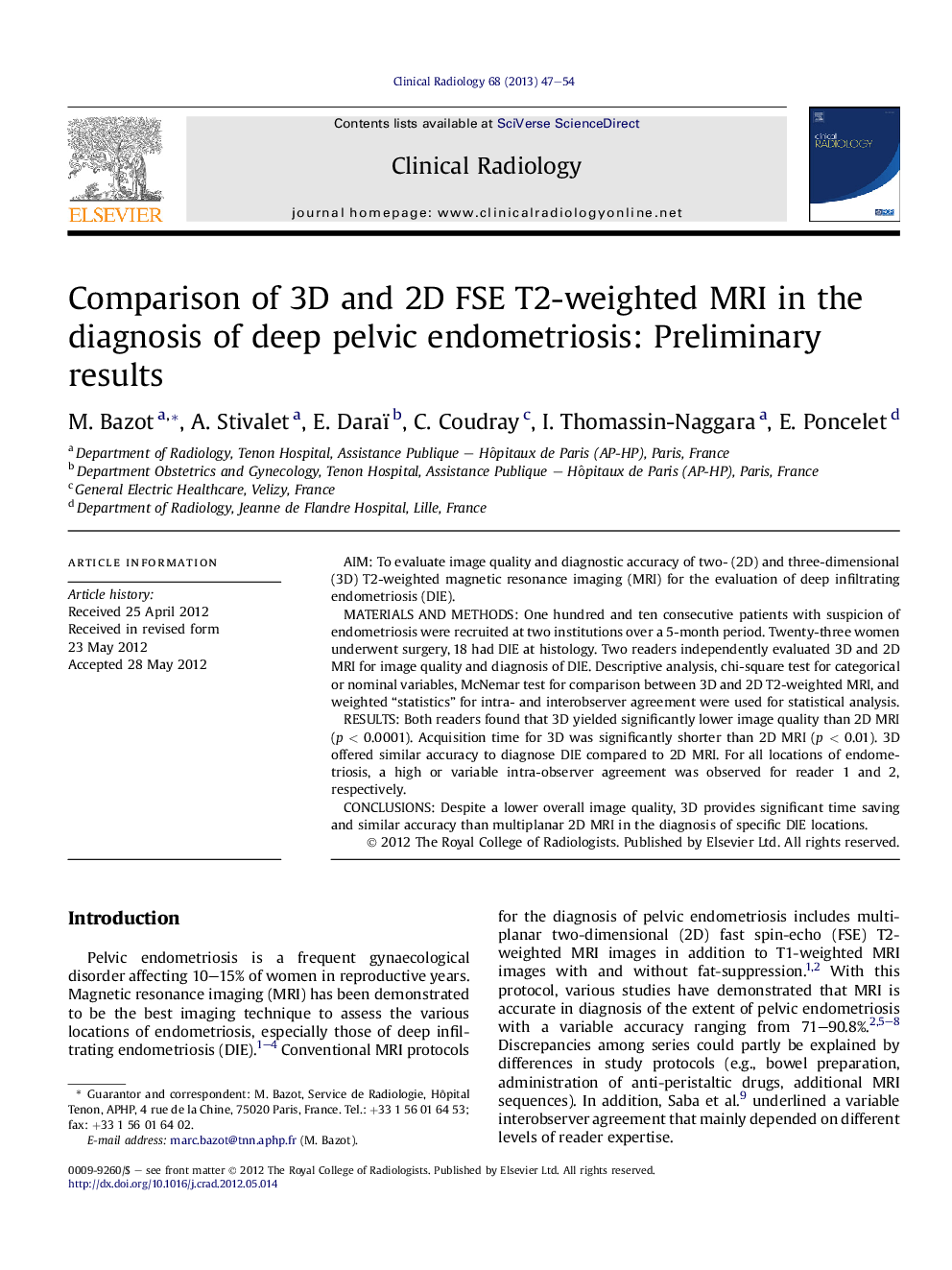| Article ID | Journal | Published Year | Pages | File Type |
|---|---|---|---|---|
| 3982264 | Clinical Radiology | 2013 | 8 Pages |
AimTo evaluate image quality and diagnostic accuracy of two- (2D) and three-dimensional (3D) T2-weighted magnetic resonance imaging (MRI) for the evaluation of deep infiltrating endometriosis (DIE).Materials and methodsOne hundred and ten consecutive patients with suspicion of endometriosis were recruited at two institutions over a 5-month period. Twenty-three women underwent surgery, 18 had DIE at histology. Two readers independently evaluated 3D and 2D MRI for image quality and diagnosis of DIE. Descriptive analysis, chi-square test for categorical or nominal variables, McNemar test for comparison between 3D and 2D T2-weighted MRI, and weighted “statistics” for intra- and interobserver agreement were used for statistical analysis.ResultsBoth readers found that 3D yielded significantly lower image quality than 2D MRI (p < 0.0001). Acquisition time for 3D was significantly shorter than 2D MRI (p < 0.01). 3D offered similar accuracy to diagnose DIE compared to 2D MRI. For all locations of endometriosis, a high or variable intra-observer agreement was observed for reader 1 and 2, respectively.ConclusionsDespite a lower overall image quality, 3D provides significant time saving and similar accuracy than multiplanar 2D MRI in the diagnosis of specific DIE locations.
